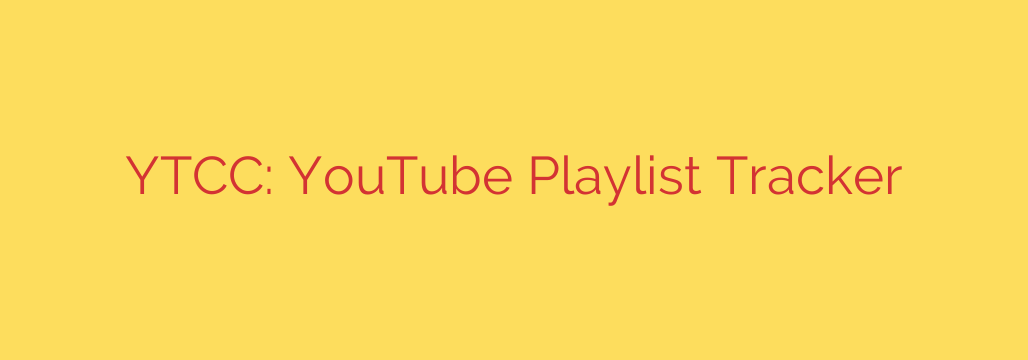
Never Lose a YouTube Video Again: A Guide to Tracking Playlist Changes
Have you ever returned to your favorite YouTube playlist, ready to enjoy a music mix or continue a tutorial series, only to be met with the dreaded “[Deleted video]” or “[Private video]” placeholder? It’s a frustratingly common experience. A creator might remove a video, set it to private, or have their channel terminated, and your once-perfect playlist is suddenly broken with no explanation of what’s missing.
YouTube doesn’t provide a history or notification system for these changes, leaving you to guess what content has vanished. Fortunately, there’s a powerful solution: using a dedicated playlist tracker to monitor and log every modification automatically.
The Problem with Disappearing YouTube Videos
Playlists are more than just collections; they are curated experiences. For music lovers, they are carefully crafted mixtapes. For students, they are structured learning paths. When a video disappears, the integrity of that experience is compromised. The core issue is the lack of transparency—you are not notified when a video is added, and more importantly, when one is removed or made inaccessible.
This is where a playlist monitoring tool becomes essential. By creating a historical record of a playlist’s contents, you can finally solve the mystery of the missing videos.
How a YouTube Playlist Tracker Works
A playlist tracker operates on a simple but effective principle: it takes periodic “snapshots” of your target playlists and compares them. By checking a playlist at regular intervals, it can identify any discrepancies between the current version and the previous one.
This process allows the tool to provide a detailed report of all changes, giving you the information YouTube itself won’t.
Key benefits of monitoring your playlists include:
- Identifying Deleted or Private Videos: The primary advantage is getting a definitive answer to the question, “What video was removed?” The tracker will log the title and ID of any video that is no longer accessible, so you can search for an alternative or simply know what you’ve lost.
- Tracking New Additions: Stay on top of dynamic playlists that are frequently updated. A tracker can notify you whenever a creator adds a new video to a series or a curator adds a new song to a mix, ensuring you never miss fresh content.
- Creating a Permanent Archive: These tools create a text-based log of a playlist’s contents over time. This log serves as a permanent, searchable archive. Even if the entire playlist is deleted, you will still have a record of every video it once contained.
- Automated and Effortless Monitoring: The best solutions run automatically in the background. Once you set it up, the tracker does the work for you, silently building a comprehensive history of your most important playlists without any manual effort.
Getting Started with Playlist Tracking
While some web-based services exist, many powerful playlist trackers are command-line tools. This approach offers more control and privacy, as the data is stored on your own system. Here is a general overview of how to set one up.
Obtain a YouTube API Key: To interact with YouTube’s data, any third-party tool needs an API key. This is a unique code that grants the program permission to request playlist information. You can get a free key through the Google Cloud Console. This is standard practice for any application that works with YouTube data.
Choose and Install a Tracker: Search for a reliable YouTube playlist tracking tool. These are often open-source projects found on platforms like GitHub. Installation is typically straightforward, often requiring just a single command.
Configure and Run the Tool: Once installed, you will need to provide it with your API key and the ID of the YouTube playlist you want to monitor. The playlist ID is the string of letters and numbers at the end of its URL (e.g.,
PL...). After the initial setup, you can run the tracker to generate the first log and then schedule it to run periodically.
A Crucial Security Tip: Protecting Your API Key
Your YouTube API key is a powerful credential. Treat it like a password. Never share it publicly, post it in online forums, or commit it to a public code repository. If you believe your key has been exposed, you should immediately go to your Google Cloud Console dashboard and generate a new one, deleting the compromised key. Storing it in a secure configuration file that is only accessible by you is the best practice for keeping your account and data safe.
By taking control of your playlists with a dedicated tracker, you can build a more resilient and reliable YouTube experience. Stop wondering what disappeared and start building a permanent record of the content you care about.
Source: https://www.linuxlinks.com/ytcc-favorite-playlists-youtube/








